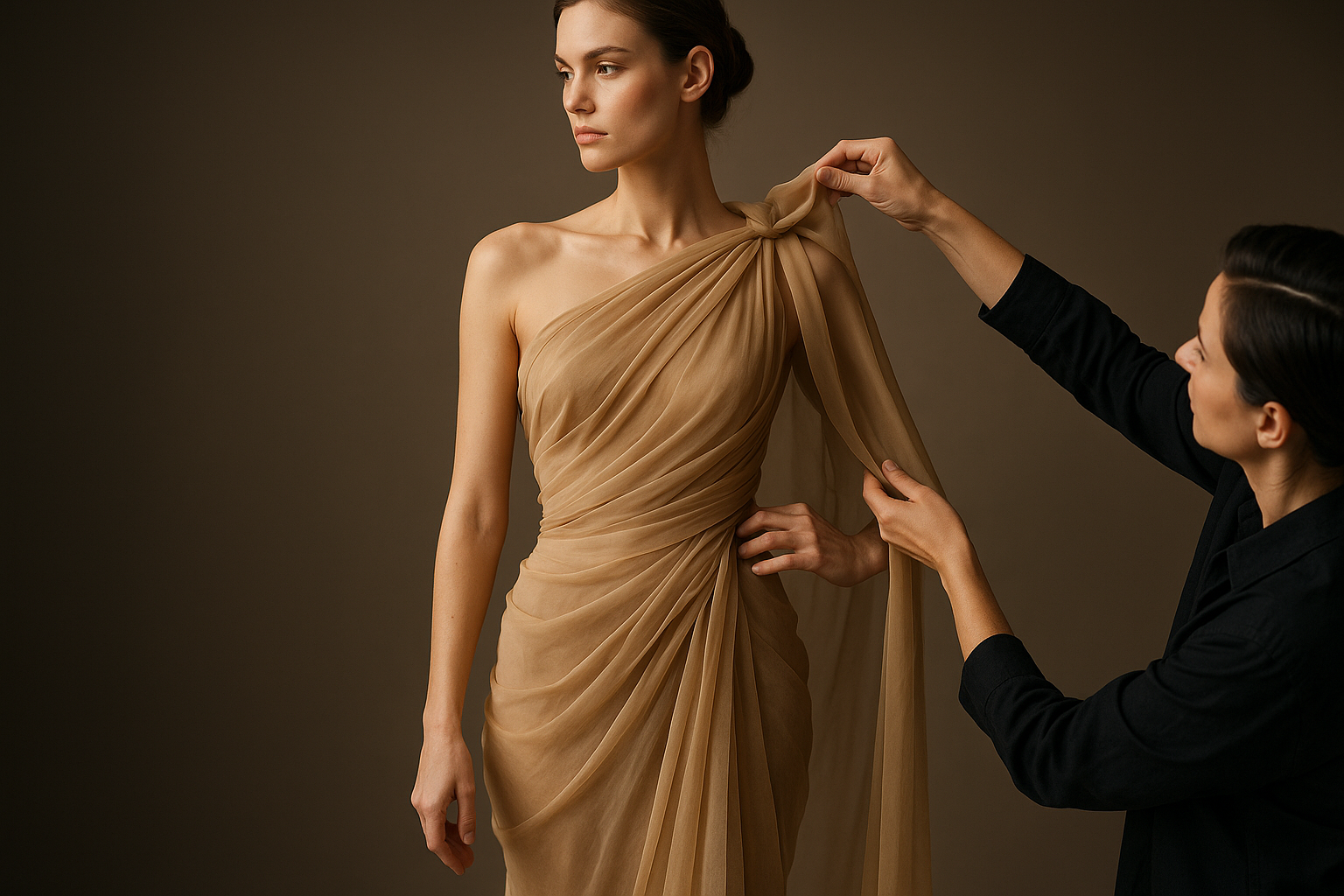Rediscovering the Grace of Draping: A Contemporary Fashion Movement
For centuries, draping has held a revered place in the world of fashion. This ancient art form has transformed over time, adapting to changing fashion landscapes and consumer preferences. Today, we dive into the captivating world of draping, exploring its rich history, current trends, and its powerful influence on contemporary fashion.

The Artful Heritage of Draping
Draping, the process of arranging fabric or clothing on a person or dress form, traces its roots back to ancient Greece. The Greeks mastered the art of draping, creating garments such as the chiton and himation that were both functional and aesthetically pleasing. As fashion evolved, so did draping techniques. From the opulent gowns of the Renaissance to the sleek styles of the 20th century, draping continued to play a vital role in defining the silhouette and style of the era.
Draping: A Contemporary Revival
While minimalist and structured styles have dominated the fashion scene in recent years, draping is witnessing a resurgence. Designers are turning to draping to add elegance and fluidity to their creations. The Fall 2021 runway shows were replete with draped garments, from flowing dresses to artfully arranged tops. The appeal lies in the versatility of draping—it can be effortlessly casual or exquisitely formal, depending on the fabric and styling.
The Appeal and Influence of Draping
The renewed interest in draping is likely a reaction to the structured, fast-fashion trends of the past decade. Consumers are gravitating towards clothing that is unique, artistic, and has a sense of history. Draping fits this bill perfectly. Furthermore, draped clothing is often more forgiving and comfortable than structured garments, making it a popular choice for many.
Draping in Action: Practical Styling Tips
-
Play with Asymmetry: One of the advantages of draping is its ability to create interesting, asymmetrical shapes. Experiment with one-shoulder or uneven hemlines to add a modern twist to your look.
-
Balance with Structure: Too much draping can overwhelm the silhouette. Balance draped pieces with structured elements to maintain definition.
-
Choose the Right Fabric: The success of a draped garment often depends on the choice of fabric. Soft, flowing fabrics like silk or chiffon work best for draping.
-
Less is More: When it comes to draping, simplicity often yields the most elegant results. Avoid overcomplicating your outfit with too many draped pieces.
The Future of Draping
As we move forward, it’s clear that draping will continue to hold a significant place in fashion. Its versatility, elegance, and historical roots make it an enduring trend that resonates with both designers and consumers. With a growing emphasis on individuality and artistic expression in fashion, draping offers a perfect canvas for creativity.
In conclusion, the revival of draping heralds a shift towards more artistic, individualistic fashion. By appreciating the past and incorporating it into contemporary styles, we can enjoy a richer, more diverse fashion landscape. So, next time you’re shopping or planning an outfit, consider the grace of draping—it might just be the fashion refresh you’ve been searching for.



